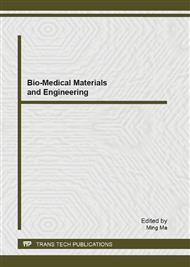p.106
p.110
p.118
p.125
p.131
p.139
p.144
p.149
p.154
A Meshless Manifold Method for Solving the Inverse Heat Conduction Problems
Abstract:
In this paper the meshless manifold method is used to obtain the solution of an inverse heat conduction problem with a source parameter. Compared with the numerical methods based on mesh, such as finite element method and boundary element method, the meshless manifold method only needs the scattered nodes instead of meshing the domain of the problem when the trial function is formed. The meshless manifold method is used to discretize the governing partial differential equation, and boundary conditions can be directly enforced without numerical integration in the problem domain. This reduces the computation cost greatly. A numerical example is given to show the effectiveness of the method.
Info:
Periodical:
Pages:
131-136
Citation:
Online since:
August 2013
Authors:
Price:
Сopyright:
© 2013 Trans Tech Publications Ltd. All Rights Reserved
Share:
Citation:


